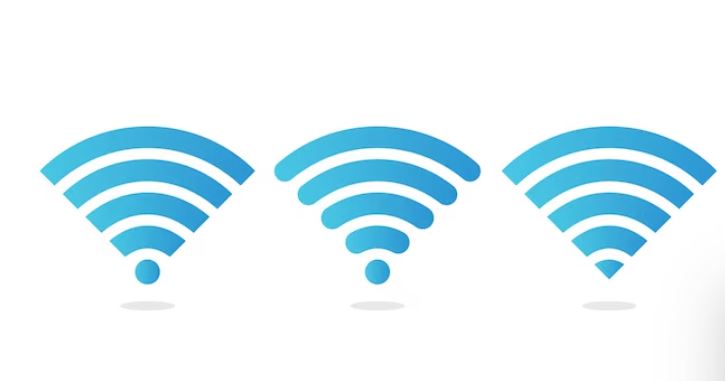Let’s see how should you secure your home wireless network for teleworking and understand the security methods that need to be taken. Each and every companies are starting to tight down for those who can do their work remotely and where a company work on multiple places, it is still working on it and manipulated like never before Future of Cybersecurity 2030.

Workers are working at different place remotely part of the time. Which means that important information and data are circulating through network and subject to the security of the network the workers connect to. It’s means to secure the security of their home wireless network.
Don’t take it light because network security matters or make it an major point if you’re teleworking. Otherwise, it could put your data at risk, not just from attackers but also from network disruptions and breakdowns
How to Secure Your Home Network (Wi-Fi)
Best way to secure home network work-from-home setup’s main route is your home Internet connection. It enables communication between a wide variety of objects, including computers, mobile phones, smart devices, and objects connected to the Internet.

The first step in making sure your network is secure is to understand the components of it and what is connected to it.
Walgreens Workforce Scheduler at Home
How to secure Wireless Network
Wi-Fi routers, which are often provided by the firm that provides Internet service to your home, act as a doorway to the global Internet. They transmit data from the internet to the appropriate devices in your home and vice versa.
They are a prime target for criminals trying to break in because of their large work. Therefore, it’s crucial to understand how they operate and how to secure my wi-fi router at home. Learn how to use your device’s security features, such as wireless encryption, additional security features like multi-factor authentication, and other filtering options.
What is VLAN and Network Segmentation
Segment your network using VLANs. IoT and standard home equipment shouldn’t be connected to the same wireless or network as your distant teleworking network. Network encapsulation is used by VLANs to logically isolate network traffic so that traffic on one VLAN cannot be accessible from traffic on another VLAN.
Walgreens Workforce Scheduler at Home

Power of a Strong Password and Network Security
Best way to secure wireless network at home the protection of a home Wi-Fi network, password security is essential. Passwords are relatively simple for unauthorized user to guess, leaving your network open to intrusion and online attacks. Your network can be protected from such assaults with the aid of solid passwords and thorough network security procedures.
Importance of a Strong wi-fi Password in Wireless Network
A Wi-Fi password should have a combination of uppercase and lowercase letters, numbers, and special characters (symbols) to make it difficult to decipher. It is challenging for anyone attempting to predict or break it due to this mixture.
Change Default Password
Commodity routers, switches, access points, and other equipment sometimes come with default passwords that are well-known and well-documented. On your home wireless networks and equipment, you SHOULD ALWAYS update the default passwords. It is exceedingly risky to change these well-known defaults since compromise will almost always result.
Protect Your Wireless Network With Virtual Private Network
When you’re not in the office, virtual private networks, or VPNs, come in incredibly handy since they act as a kind of secret Internet route that increases security.
How VPNs Secure When You’re Away from the Office
With a VPN, all data traveling between your computer or device and the VPN location is mixed up and rendered unreadable. Your information is jumbled up, so if someone with ill intentions takes it, they won’t find anything useful.

When working outside of the office, using a VPN ensures that sensitive data is transferred securely, even through your home Wi-Fi.
Basic Steps for Securing Your Wireless Network
It doesn’t take much technical expertise to implement the six fundamental steps for protecting your home wireless network for teleworking. They ought to be simple to put into practice.
Organizational Policies and Rules
If your company has any guidelines for teleworkers, make sure to study them and follow them. For instance, it can restrict your ability to access employee or customer data to a single device, browser, or database.
Strong Passwords
Always use a strong password, especially for crucial logins like your network settings and organizational databases. A good password is lengthy and distinct. Letters, numerals, and unique characters or symbols should all be present.
Smart Password Management
Accessing the router’s administrative settings is referred to as smart password management. Because anyone with this access has the ability to change these settings, this poses a serious risk to network security. To prevent unauthorized access to your router’s settings, use a strong password.
Two-factor authentication
Two-factor authentication, or 2FA, entails connecting your account access to a particular gadget, such your smartphone. A passcode is transmitted to it each time you log in, and you must input it on the main device where you are attempting to log in.

Beware Scams and phishing
Scams and phishing should be avoided because they are prevalent in today’s world. Usually, they take the form of phony emails or internet links. In actuality, these are dishonest methods of obtaining your data, which can jeopardize the security of your wireless network.
Secure Device
Using specialized gadgets and other connected devices may not have crossed your mind, but doing so is crucial because they pose a security risk. They consist of smart cameras, fitness trackers, and voice-activated assistants. Think about what may occur if someone with bad intentions had access to them. You wouldn’t want your security camera, for instance, pointed straight at your computer monitor. Your home and business networks should ideally be kept separate.
For a suitable Router access Password and Recommended Symbol
- The password must have six characters or more.
- At least two of the following string combinations must be present in the password:
- Number, capital letter, and lowercase letter
- Special characters include (‘! @ # $% & * () – _ = + | [ ] ;:'”,. > /?).
- Any user name or user name in reverse cannot be the password.
Is Web Development Dying 2023?
Advantages of MAC Address Filtering
A MAC address is a specific number that serves as an identification for devices connected to computer networks. You may secure and filter connectivity to your home SSID using the MAC address, which is a layer 2 address.
Which MAC addresses are permitted to connect can be specified. Remember that MAC addresses can also be rotate, therefore this shouldn’t be used as your network’s only layer of security but rather as one of several.
Minimizing the Attack Surface with MAC Address Filtering
By enabling MAC address filtering, you’re effectively restricting network access to a set list of devices. This strategy helps reduce the attack surface.
Better Measures for Securing Your Wireless Network
It takes technical know-how to implement the ten technical procedures for safeguarding your home wireless network for teleworking. If not, hire a professional to help you; otherwise, you should be able to apply them on your own.
SSID Accessible
If you need to make your SSID (Service Set Identifier) accessible, alter it from the default name; otherwise, a hidden SSID will be more secure. It might be referred to as “Broadcast SSID” in the router settings, which you can allow or disable.
Virtual Private Networks (VPNs)
Virtual Private Networks (VPNs) for enterprises are used by some companies. If so, configure your business computer with a VPN. You ought to receive instructions from them on how to achieve it. If not, think about setting up your own VPN.
Network Security
Check the security of your Wi-Fi network’s configuration. Make sure your router password is strong and use WPA2 or WPA3 security. All data exchanged via the network will be scrambled, rendering it unintelligible to outsiders. In the event that your router doesn’t support WPA2/3 encryption, you might need to get a new one.
Workforce Software Eleveo | Guideline Optimization Software
Secure Your Computer
Make sure the computer or other teleworking device is secure. If you set up your router using your computer, this is even more crucial. http://www.nist.gov/blogs/cybersecurity-insights/cybersecurity-awareness-month-securing-devices-home-and-workludes computer security setting a PIN or fingerprint login, utilizing a hardware lock, and using a secure user account password.
Automatic Router/Modem Updates
The CIS advises configuring your router to install vital security patches and updates automatically.
WPS and UPnP
You should disable WPS (Wireless Protected Setup) and UPnP (Universal Plug and Play). They make it simple to connect to a Wi-Fi network, but regrettably, this makes it too simple for unauthorized. It’s preferable to avoid using them and to keep them off.
Secure Your Firewall
A firewall works to prevent harmful traffic from accessing your network. Although most routers come with one, you can also use firewall software on your PC.
Network Checking
Consistently keep an eye out for any atypical or suspicious activities on the network. Watch the bandwidth and usage as well. If necessary, examine or modify the router’s settings, or get in touch with the technical support staff at your company.
Remote Administration
Disable remote administration to limit network administration to when you are physically present on the network. if being handled remotely
FAQs
How can I identify the devices connected to my home Wi-Fi network?
The interface of the majority of Wi-Fi routers shows every item connected to your home network. You can identify the devices on your network and find any unusual ones by regularly checking this list. Network security relies on ensuring that only known devices are connected.
What steps can I take to secure my home network from cyber threats?
Creating a strong Wi-Fi password is the first line of security. Wi-Fi Protected Access (WPA), using a Virtual Private Network (VPN), and updating your router and network devices are further precautions. The probability of a cyber breach can be significantly reduced with regular monitoring and cutting-edge methods like MAC address filtering.
Does having many smart devices at home increase my security risk?
Yes, the possible targets for unauthorized are expanded by the existence of various IoT and smart devices on a home network. These devices could become entry points into your network if they are not adequately secured. This risk can be reduced with the use of regular updates, strong passwords, and network segmentation.
Does remote work increase the likelihood of a data breach?
Working can in fact increase the danger of a data leak, particularly if the security of your home Wi-Fi network is inadequate. It can be dangerous to handle sensitive information through networks that are less secure than those found in conventional office environments. This risk can be considerably decreased by using a VPN and putting recommended security procedures into effect.
How does a VPN protect critical data?
By encrypting the connection between your device and the VPN server, a VPN safeguards critical data. Your data is protected against cyber attacks by this encryption, which makes any data exchanged over this connection unintelligible to possible interceptors.
How frequently should my Wi-Fi password be changed?
It might be wise to change your password every three to six months for the majority of users and residential settings. Regular password upgrades reduce the possibility of illegal network access. Make sure your new password is strong and difficult to guess when creating it.







